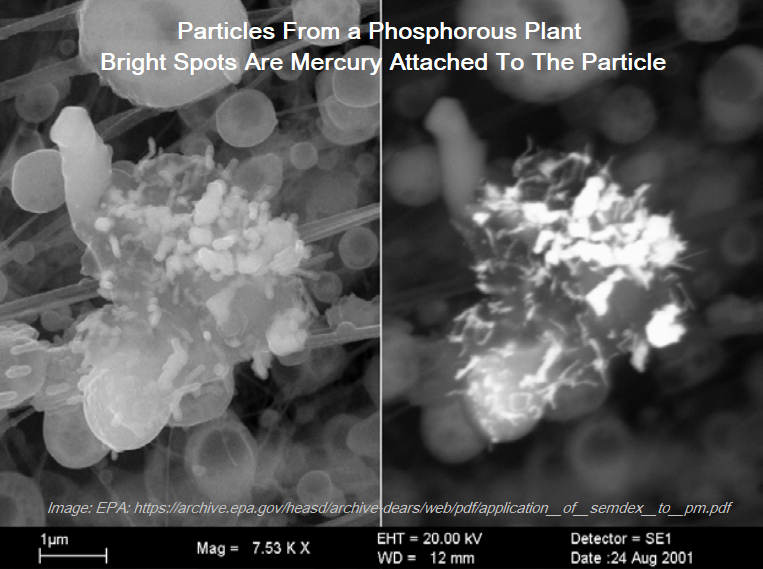May is Clean Air Month – we are highlighting different kinds of air pollution during Clean Air month.
What is Particle Pollution?
Particle pollution, also called particulate matter (PM), is small bits of soot, dust, metals, chemicals, or droplets that float (stay suspended) in the air. Particle pollution is not a gas, but very small particles. Smoke is a stream of particle pollution so thick we can see it. When it spreads out, we don’t see it any longer, but the particles are still there. Particle pollution is classified by size: coarse (10 microns or less = PM10), fine (2.5 microns or less= PM2.5). Sometimes we also talk about ultrafine PM, which is <1.0 microns.
PM can contain carbon (soot), or very small that are made from chemical reactions of chemicals that come from burning fuel. PM can also contain chemicals from the coal, gas, or wood that was burned (polycyclic aromatic hydrocarbons), and it can also contain heavy metals such as arsenic or mercury that were in the coal or gas.
Where Does Particle Pollution Come From?
Particle pollution can come from human or natural sources, but the most dangerous kind mostly comes from burning fuel – for power, for factories, for trucks and cars, or from trees burning during a wildfire. It can also come from dust kicked into the air by trucks and traffic. Natural sources include pollen, sea spray, and volcanoes.
Because particle pollution mostly comes from vehicles, factories, and refineries, and because our country built these sources in and near communities of color, particle pollution is not equitable in exposure or in the resulting health problems.
Is Particle Pollution a Problem?
When we breathe in particle pollution, some of it damages our airways, and some of it damages our lungs, and some of it goes deep into the smallest air sacs in our lungs. Some of it is small enough to go straight from our lungs into our blood. When we breathe it, whatever is part of the particle goes into our airways and lungs – chemicals, soot, heavy metals, and more. Because some of it gets into our blood, it can cause or worsen many diseases, not just lung diseases.
What Are the Health Problems That Come From Particle Pollution?
Particle pollution affects our whole body: it causes lung damage, lung disease, lung cancer. It causes other kinds of cancer as well. It can cause asthma and makes asthma and COPD worse. It causes heart attacks, heart disease, strokes, dementia, cognitive decline, and is linked to high blood pressure, diabetes, obesity, and kidney disease.
Short term spikes of particle pollution lead to increased deaths that same day and over the next several days.
In children, particle pollution causes prematurity, low birthweight, and damages children’s lung growth from birth through the teen years. It affects cognitive development and school performance from infancy through high school.
Who is Most At Risk From Particle Pollution?
Because children are still growing, all children – infants, young children, and teens – are at risk from particle pollution. Older adults, as well as adults with lung and heart conditions, are also most at risk.
And because of unequal exposure, people of color are also most at risk.
What Can We Do About Particle Pollution?
The best thing we can do about PM, is to stop burning fuel for power and transportation. This includes fossil fuels, biomass and biodiesel. Burning anything creates PM. We need clean, renewable power such as solar, wind, or geothermal. Solar and wind are now less expensive than both coal and gas.
How Can We Do It?
It takes both individual action and government policy to make our air cleaner.
If you are able, you can walk or bike to get where you are going, buy an EV car, take transit (subways or buses), and replace any fossil fuel powered furnaces or appliances. Anything you do to reduce electricity use, such as caulking and sealing windows, replacing old light bulbs, and other energy saving actions, will mean your power company is burning less coal or gas and therefore making less PM.
Some things will need government policies and support, at all levels of government: city, state, and federal. Policies can include incentives or grants for energy conservation, electric vehicles of all kinds, electric vehicle charging stations, and clean power. We need grants and subsidies for lower wealth and historically marginalized communities, to reduce energy burden and health disparities. EPA can set stronger air pollution standards. We can support solar, wind, and geothermal, and stop subsidizing fossil fuels.
And remember, because PM comes from burning fossil fuels, anything we do to reduce PM will also help fight climate change.
Do what you can as an individual, and use this link to advocate with your elected officials at all levels and let them know you want healthy air. It keeps us all healthier: Healthy Air is Health Care.
For more information, see the EPA website or the American Lung Association website.
05/28/2021





